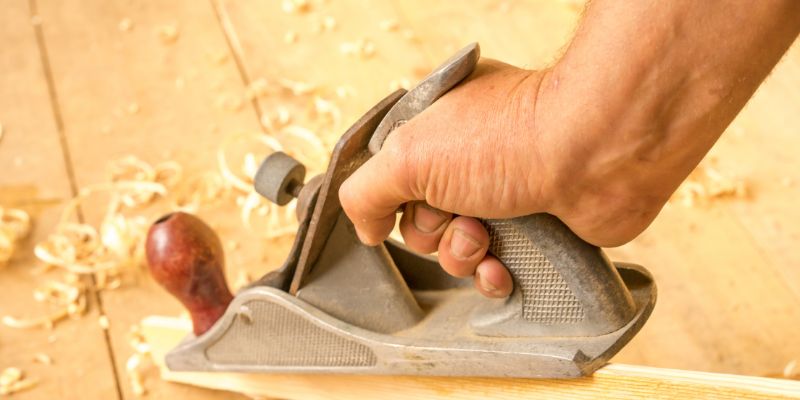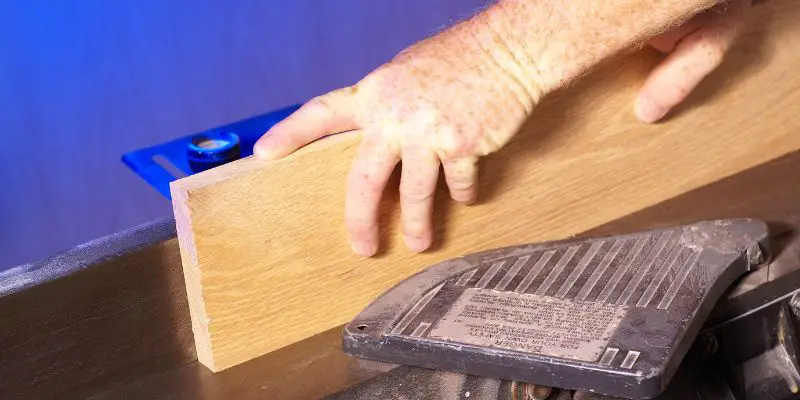A jointer works by leveling and smoothing the edges of a wooden board or plank to create a flat surface.
Working Mechanism Of A Jointer
A jointer is a versatile woodworking tool used to create flat and even surfaces. It is an essential tool for woodworkers and carpenters in achieving precise results. Understanding the working mechanism of a jointer is crucial for using it effectively.
Components Of A Jointer
A jointer consists of several main components that work together to achieve its functionality:
| Component | Description |
|---|---|
| Infeed Table | The surface where the rough stock is first fed into the jointer for initial planing. |
| Cutter Head | The rotating cutting knives that remove material from the wood and create a smooth surface. |
| Outfeed Table | The adjacent surface to the infeed table where the wood exits the jointer after being planed. |
| Fence | A vertical guide that ensures the wood is positioned at the correct angle and maintains a straight edge. |
How A Jointer Achieves Precision
A jointer achieves precision in woodworking through a systematic process:
- The wood is fed onto the infeed table.
- The rotating cutter head removes material from the wood’s surface.
- The fence guides the wood, ensuring a straight edge is created.
- The outfeed table supports the wood as it exits the jointer, providing stability.
This step-by-step process allows the jointer to flatten and square wood surfaces accurately, which is essential for various woodworking projects.

Step-by-step Guide To Using A Jointer
A jointer is an essential tool for any woodworking enthusiast. It helps flatten and straighten wood material, ensuring a smooth and precise finish. Whether you are a professional carpenter or a DIY enthusiast, understanding how to use a jointer correctly is crucial. In this step-by-step guide, we will take you through the process of preparing the wood material, setting up the jointer, using it correctly, and ensuring precision and safety.
Preparing The Wood Material
Before using a jointer, it is important to properly prepare the wood material:
- Selecting Suitable Wood: Choose a piece of wood that is free from knots, cracks, and warps. This will ensure a better result.
- Measuring and Marking: Measure and mark the areas on the wood that need to be flattened or straightened. This will help you focus your efforts and achieve the desired outcome.
- Securing the Wood: Use clamps or a vice to securely hold the wood material in place. This will prevent it from shifting and ensure stability during the jointing process.
Setting Up The Jointer
Proper setup is essential for using a jointer effectively:
- Adjusting the Fence: Ensure that the fence is square to the jointer table. Use a square to make any necessary adjustments. This will help maintain accuracy while jointing.
- Setting the Depth of Cut: Adjust the depth of cut according to the thickness of the wood material. Start with a shallow cut and gradually increase it until you achieve the desired result.
- Checking the Blade Alignment: Make sure the blades are aligned parallel to the jointer table. If necessary, adjust the blade height and alignment using the manufacturer’s instructions.
Using The Jointer Correctly
Now that you have prepared the wood material and set up the jointer, it’s time to start using it:
- Feeding the Wood: Place one end of the wood material on the jointer table and push it steadily against the fence. Use even pressure and maintain a consistent feed rate for the entire length of the board.
- Supporting the Wood: To prevent snipe (excess material removal at the ends), support the wood with a roller or an auxiliary table at both the infeed and outfeed sides of the jointer.
- Repeating the Process: Continue jointing the wood material, taking light passes and making adjustments as necessary. Ensure that each pass slightly overlaps the previous one to achieve a smooth and flat surface.
Ensuring Precision And Safety
To ensure the best results and maintain safety while using a jointer, keep these tips in mind:
- Protective Gear: Always wear safety glasses and hearing protection when using a jointer.
- Feeding Direction: Feed the wood against the rotation of the cutterhead. This helps prevent kickback and ensures a smoother cut.
- Cleanup: Regularly clean the jointer table and remove any wood chips or debris to maintain optimal performance.
- Regular Maintenance: Keep the blades sharp and properly aligned for accurate jointing. Follow the manufacturer’s guidelines for maintaining the jointer’s overall condition.

Frequently Asked Questions On How Does A Jointer Work
What Is A Jointer And How Does It Work?
A jointer is a woodworking tool used to flatten and straighten boards. It works by rotating a cutterhead with sharp blades, which trims off the high points of the wood surface. As the board is guided along the tool’s flat table, the blades remove small amounts of material for a smooth, even result.
Do I Really Need A Jointer?
Yes, a jointer is essential for woodworking. It helps create flat and smooth surfaces by leveling and squaring edges. This tool ensures accurate woodworking projects, improves the quality of lumber, and reduces the need for sanding. A jointer is particularly useful for making furniture, cabinets, and other precise woodworking tasks.
What Is The Difference Between A Jointer And A Planer?
A jointer is used for flattening and straightening the edges of boards, while a planer is used to make their surfaces smooth and even. Jointers are primarily for edge work, while planers are for overall thickness control.
How Does A Jointer Straighten A Board?
A jointer straightens a board by removing small amounts of material until the surface is flat and even. The board is passed over the jointer’s rotating knives, which cut away high spots, resulting in a straight and smooth finish.
Conclusion
To sum up, a jointer is an essential tool for achieving precise and smooth edges on wooden boards. By flattening and squaring the surface, a jointer ensures seamless joining and enhances the overall quality of woodworking projects. With its adjustable fence and cutter head, it offers versatility and control.
Understanding how a jointer works empowers woodworkers to tackle challenging tasks with confidence and produce exceptional results. Incorporating a jointer into your woodworking arsenal will undoubtedly elevate your craftsmanship to new heights.


